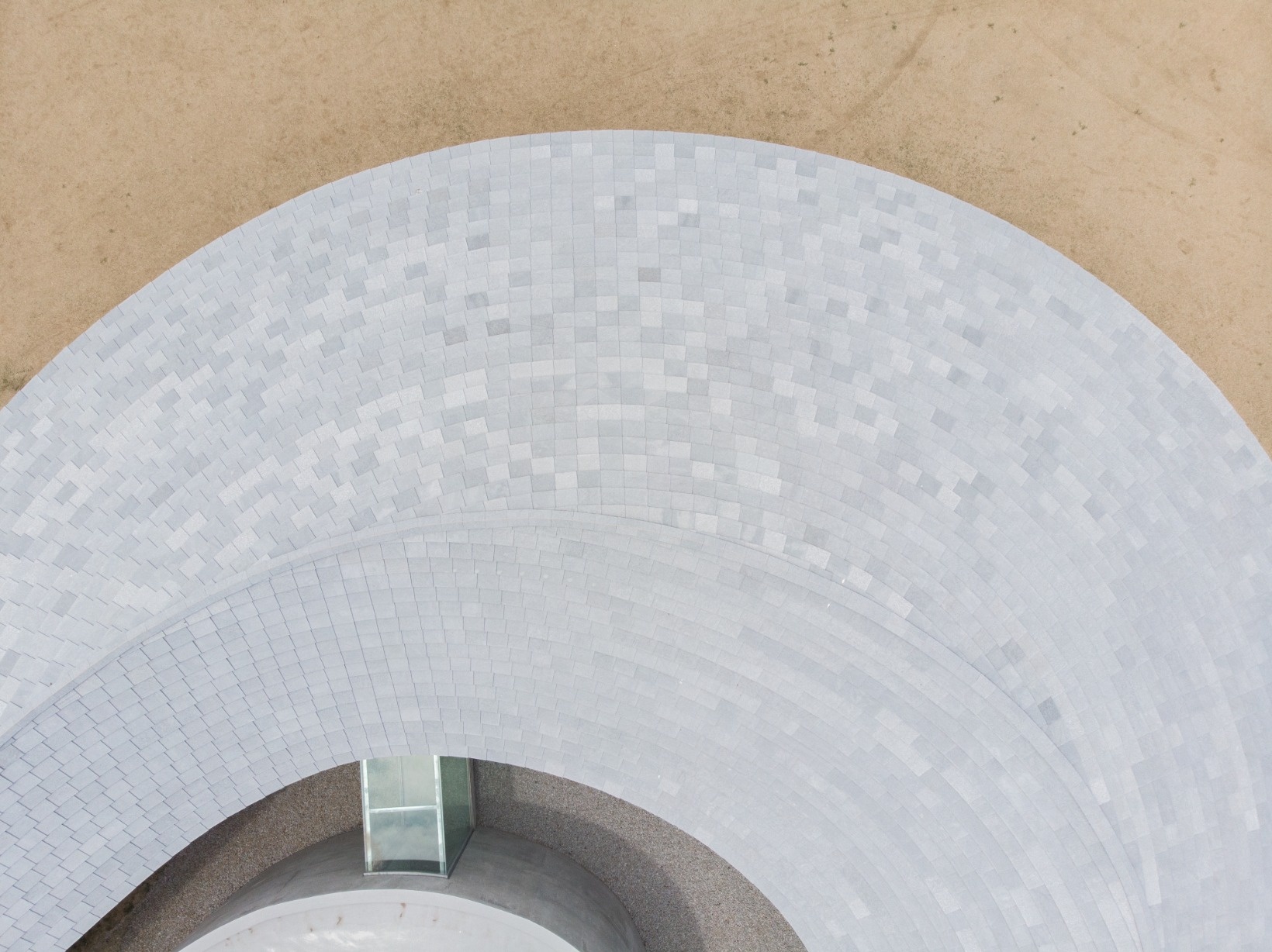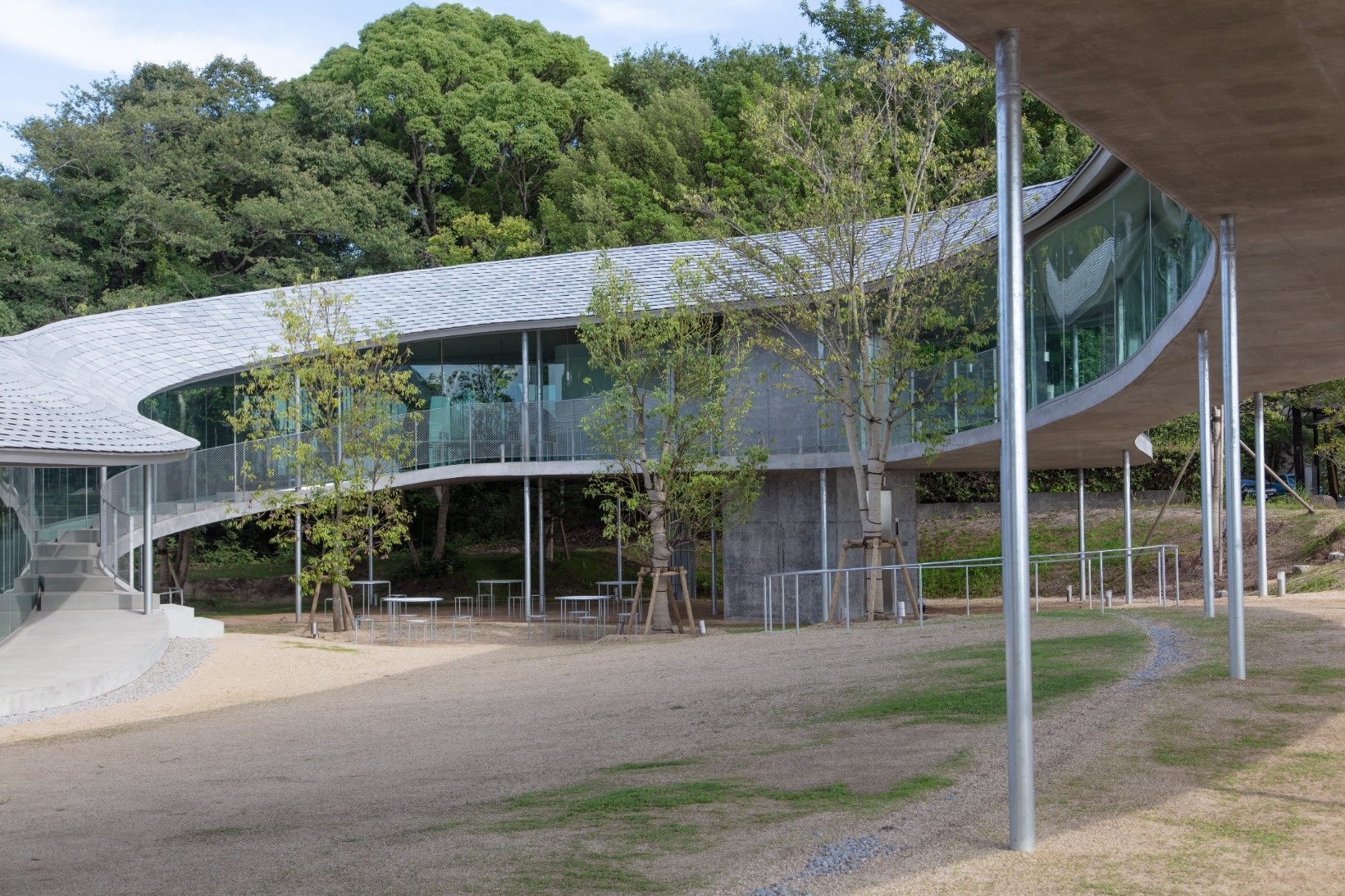Takashi Suo's proposal, a gallery approximately 200 meters long, was the studio's first project after its founding in 2015, developed for six years since 2016 and it was officially inaugurated last August.
Initially, the contest requested a series of programmatic pieces, although they left their size, shape and arrangement at the discretion of the contestants. "Basically, they wanted us to think about the possibilities of the plot," explains Takashi Suo. For Suo, dropping a single volume was not the solution. Instead, he used topography and viewpoints to shape a building whose spaces are connected by a continuous corridor.
The building, nicknamed "Yashima Mountaintop Park", allows you to walk through the area through delicate turns that naturally direct visitors' gaze to the different landscapes surrounding it, taking advantage of the spectacular views of the inland sea of Yashima. hedge.

Elevated walkway viewpoint and cultural centre by SUO. Photography courtesy of Yashima Navi.

Elevated walkway viewpoint and cultural centre by SUO. Photography courtesy of Yashima Navi.

Elevated walkway viewpoint and cultural centre by SUO. Photography courtesy of Yashima Navi.
The winding structure consists of a comprehensive program that aims to revitalize the landscape of Setonaikai National Park. The project incorporates gazebos, closed and open to take advantage of the mild climate of the island of Shikoku, a cafeteria, spaces for events, conferences and exhibitions winding around a central courtyard and six small garden spaces.
One of the most exciting aspects of the proposal is its way of taking root with tradition, transforming the serpentine building with glass walls into a space protected by a gabled roof, formed by tiles made of Aji Ishi, a kind of granite. grey produced in Mure-Cho and Aji-Cho, towns adjacent to Yashima. The local Sanuki Stone Processing Association built and delivered up to 30,000 tiles to realise the “Yashima Mountaintop Park”.
The building, nicknamed "Yashima Mountaintop Park", allows you to walk through the area through delicate turns that naturally direct visitors' gaze to the different landscapes surrounding it, taking advantage of the spectacular views of the inland sea of Yashima. hedge.

Elevated walkway viewpoint and cultural centre by SUO. Photography courtesy of Yashima Navi.

Elevated walkway viewpoint and cultural centre by SUO. Photography courtesy of Yashima Navi.

Elevated walkway viewpoint and cultural centre by SUO. Photography courtesy of Yashima Navi.
The winding structure consists of a comprehensive program that aims to revitalize the landscape of Setonaikai National Park. The project incorporates gazebos, closed and open to take advantage of the mild climate of the island of Shikoku, a cafeteria, spaces for events, conferences and exhibitions winding around a central courtyard and six small garden spaces.
One of the most exciting aspects of the proposal is its way of taking root with tradition, transforming the serpentine building with glass walls into a space protected by a gabled roof, formed by tiles made of Aji Ishi, a kind of granite. grey produced in Mure-Cho and Aji-Cho, towns adjacent to Yashima. The local Sanuki Stone Processing Association built and delivered up to 30,000 tiles to realise the “Yashima Mountaintop Park”.





























































